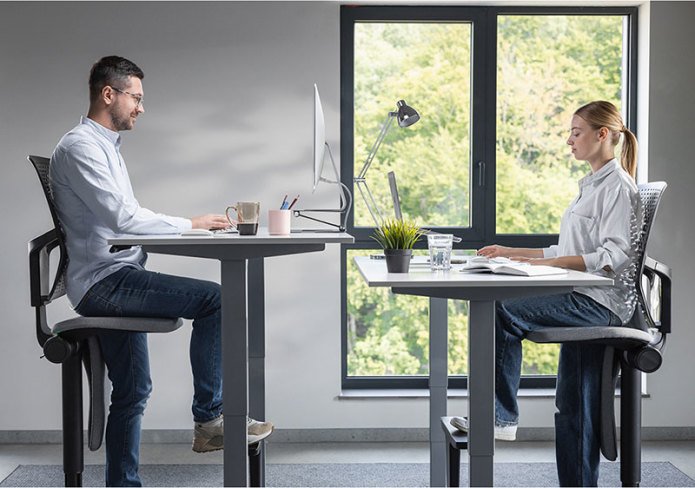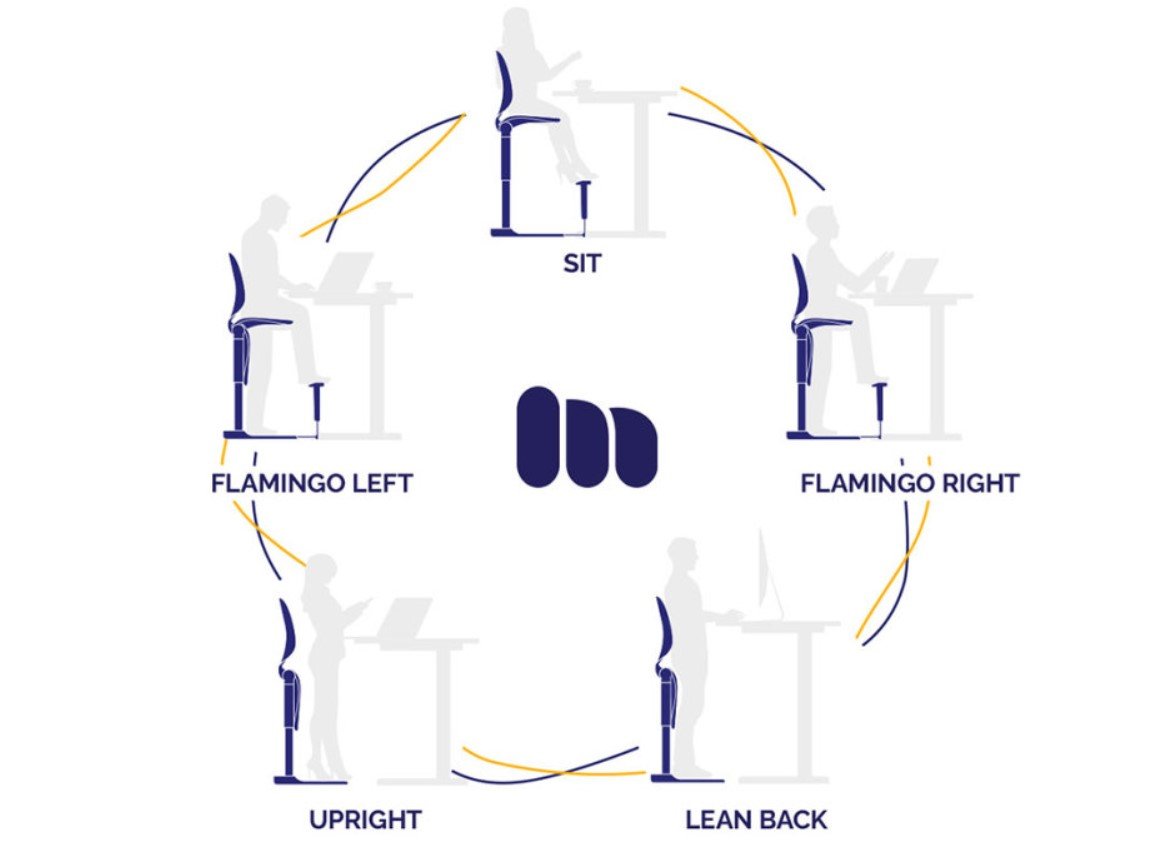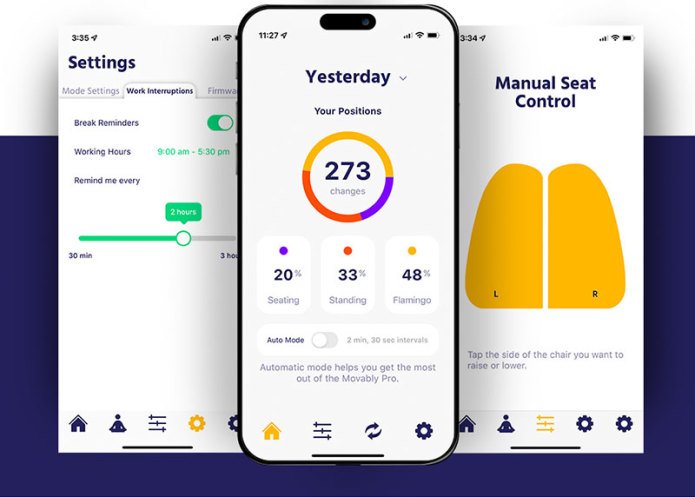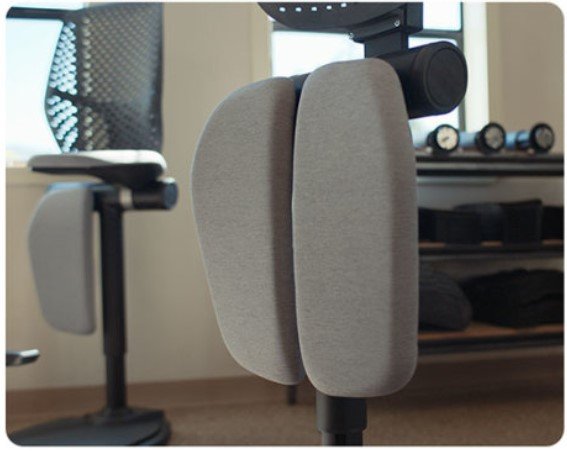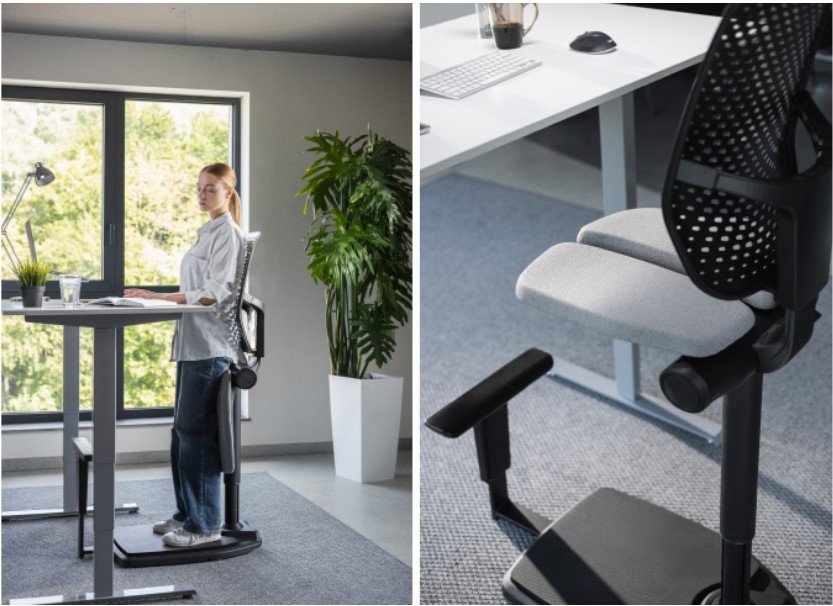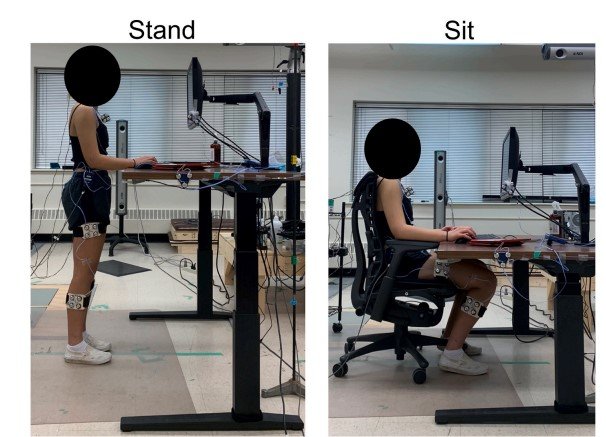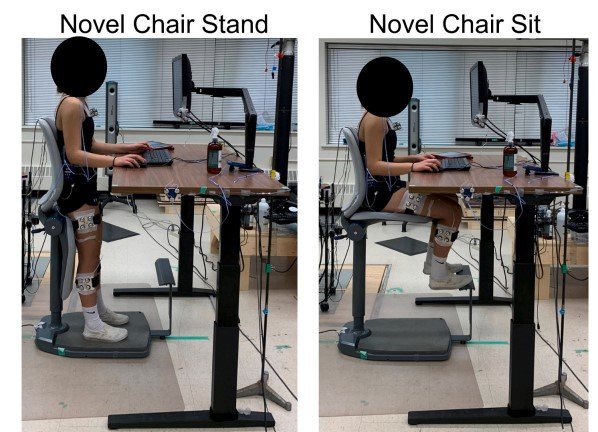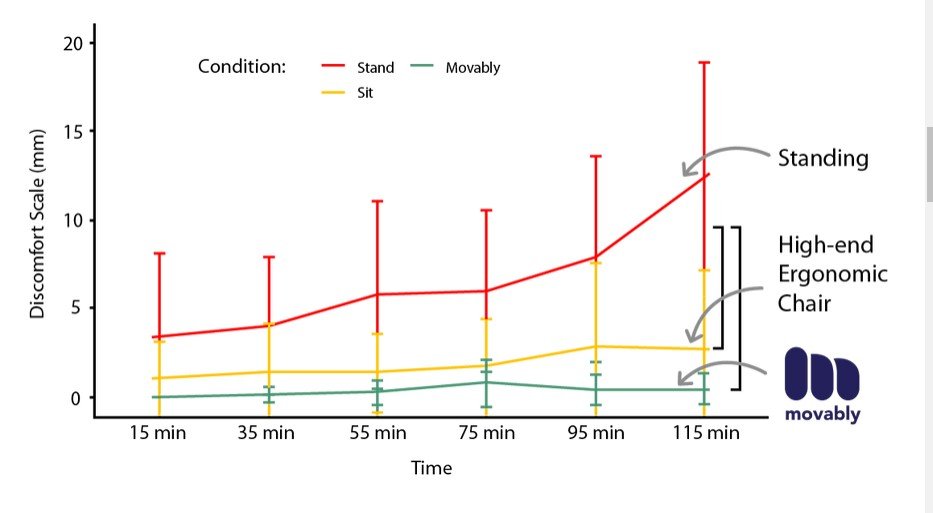The Movably Pro - A Smart Chair for Advanced Wellness
All featured products and reviews are evaluated through independent research and third party studies. All opinions and findings are honest and reflect our personal experiences with each product or service. When you buy through our links, we may earn a commission.
“All of these features and the emphasis on range of motion and movement may seem like overkill for an office chair. But, independent studies show that Movably and its promotion of dynamic sitting may actually work towards a solution that is more effective than any other ergonomic chair.”
The modern workforce is no stranger to the challenges posed by prolonged sitting and sedentary routines. With new technologies often introduced that aim to blend the boundaries between productivity and personal wellness, I explored what sets the Movably Pro apart and how it encourages users to maintain better posture and movement throughout their work day.
What is the Movably Pro?
The Movably Pro is an innovative active office chair that represents a novel approach to improving workplace ergonomics and promoting regular sit-stand transitions during office work. This distinctive chair is engineered to encourage frequent changes in posture through both auditory and tactile prompts, as well as minimal-to-no adjustments to the work surface when transitioning.
Movably Pro features a uniquely designed split seat that enables users to move each side up and down independently, allowing for a full seat, a half seat, or no seat at all using a touch sensor on either side of the chair. It is mounted on a static anti-fatigue mat to improve user comfort, and includes a footrest mount that can be used in any position. It includes lumbar support available with or without additional padding, and even some vegan leather options.
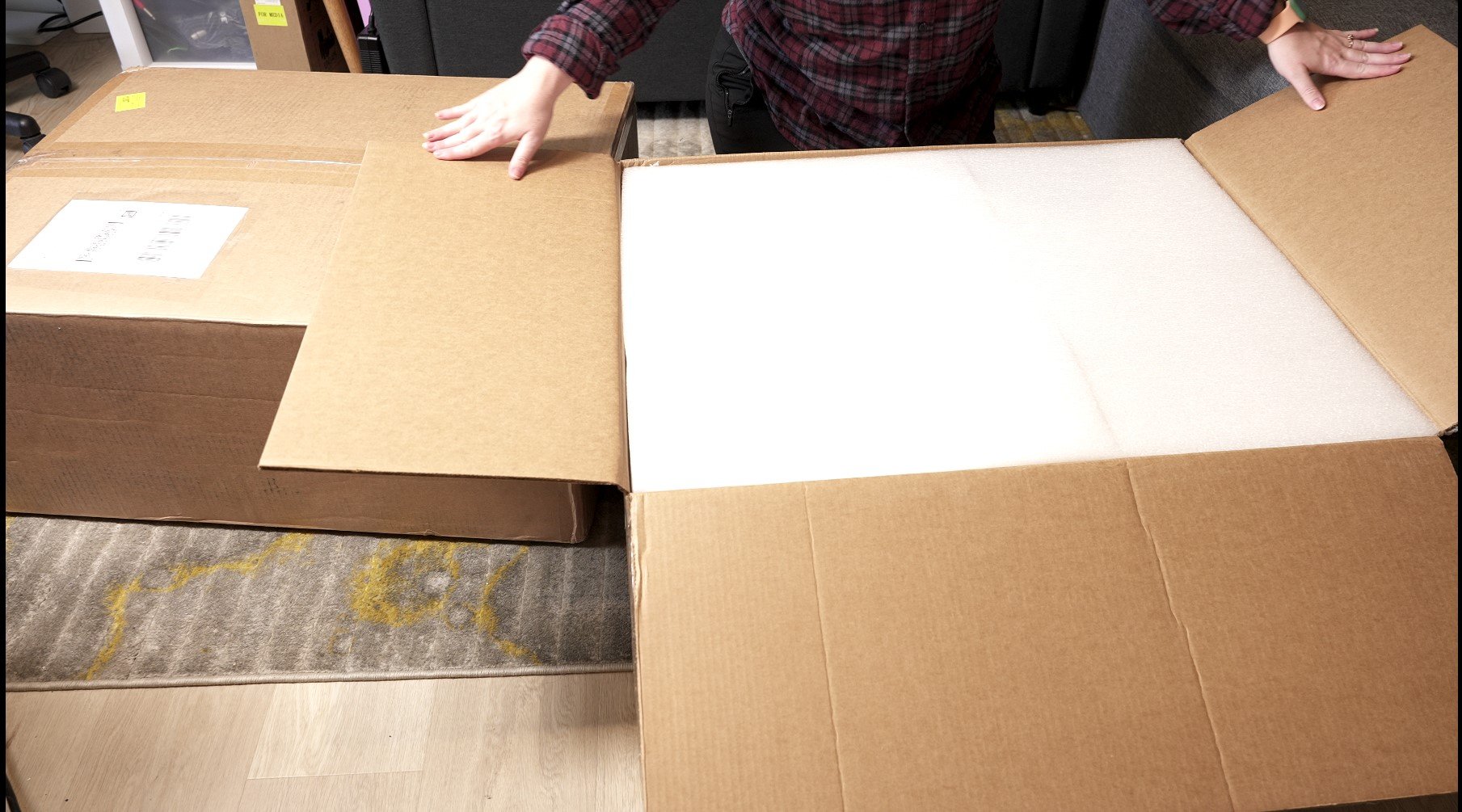
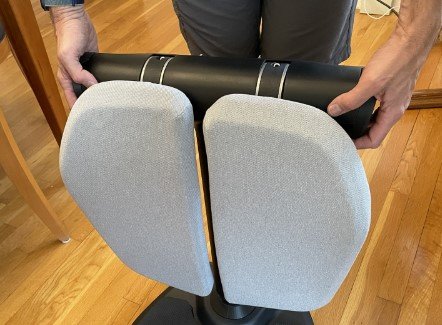
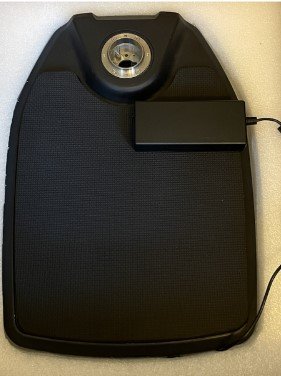
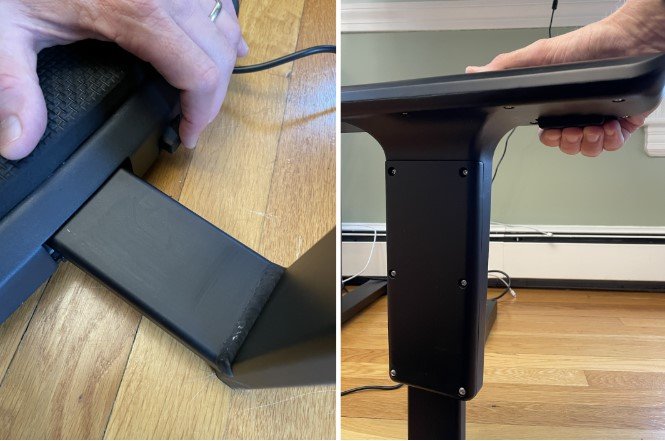
Unboxing and Assembly
The Movably Pro ships in two separate and substantial boxes, and I was surprised by their weight upon arrival. Assembly was simple and straightforward, and took approximately 20 minutes. Four screws attached its seat to the base, and another three attached the backrest to the seat, all included. The footrest slides into the base using a right angled support that also slides in, so no additional screws are used in this step. The height of the footrest and chair can be adjusted, but once in place, shouldn’t require much adjustment after this. The design of the chair allows users to engage in active sitting with a touch, and avoids having them take too much attention from their current work to raise or lower major support structures. The device uses a 24V, 270W power supply that can be fed through narrow channels under the base of the chair to allow for organized cord control. This is a pretty massive power adapter, and does require some dedicated space despite the consideration for cord organization. With a length of 27 inches from its base to the power adapter, and another 56 inches from the brick itself to the end of the cord. For those who have shelving or other organization under their standing desk setup, it might require some shuffling around to get it to fit nicely but it does seem long enough to allow for that to happen. Once plugged in, users should see a green light on either side of the seat indicating that the chair has power and is ready for use. The base features wheels on the back that allows for easier mobility and so, it was not as unwieldy as I expected it to be when maneuvering it into place in front of the desk. Make no mistake however, it is heavy, and isn’t the kind of chair that you can plan to move in and out of tight spaces like smaller, mechanical rolling chairs but definitely takes up less space than some of the larger gaming chairs with footrests and deep reclines.
With the Movably Pro assembled and ready for action, the focus can shift to its broader context of promoting healthier and more active habits. In place of the more gimmicky traits of other office or gaming chairs like logos, speakers, or vibrations masquerading as massaging; there are attributes here with evidence-based benefits.
Key Features and Benefits
Movably's inception is rooted in co-founder Mark Kapij's personal experience, having faced the discomfort of extended sitting during his recovery from a severe cycling accident. This ordeal prompted him to seek solutions, exploring a wide array of ergonomic chairs and seating alternatives without finding a definitive answer. Mark's revelation extended beyond his own struggles, acknowledging that many desk users suffered from issues like poor circulation and chronic lower back pain due to prolonged sitting. This realization highlighted the adverse impact of ambition on the well-being of countless workers. In 2015, Mark, alongside Andriy Chulyk, initiated a company specializing in standing desks. However, they soon recognized that standing continuously presented similar challenges. Their breakthrough came when they realized that movement, rather than sitting or standing, held the key to addressing these health issues. This revelation sparked the quest for a harmonious balance between movement and focus, culminating in the development of the Movably Pro smart dynamic chair in 2019.
For its focus on movement, the chair features a split seat design allowing for individual adjustments to how the user sits and stands, including offering a unique combination of both that they call “Flamingo”. With the included app, anyone can take charge of their wellbeing during work or play by monitoring position changes, setting and monitoring goals, and creating reminders for when to step back and take a break.
The app also allows you to choose to control your position changes or be gently prompted to switch things up with an optional phone alert, small vibrations, and a nudge by the seat itself. These vibrations can also tell you if there is resistance to a position change, as the seat’s parts will not drop away if they detect weight. Instead, it will give a buzz to indicate that the user should lift themselves away, making position changes safe and avoiding pinching or dropping the person seated.
All of these features and the emphasis on range of motion and movement may seem like overkill for an office chair. But, independent studies show that Movably and its promotion of dynamic sitting may actually work towards a solution that is more effective than any other ergonomic chair.
Research
Musculoskeletal injuries related to sedentary office and computer work, particularly the scourge of back pain, have become a pervasive and costly burden. A study conducted among office workers in 2017 at the Shiraz University of Medical Sciences unveiled a stark reality: individuals in such roles spend an average of 6.29 hours out of their 8-hour working day seated, with women logging even more sitting hours than men. This prolonged sitting behavior has profound consequences, ranging from physical exhaustion and job dissatisfaction to an increased risk of hypertension and a high prevalence of musculoskeletal injuries in various parts of the body. The study underscored the urgent need for effective solutions to combat the adverse effects of sedentary work. Their proposed solution was the use of active workstations, particularly sit-stand workstations. However, it's essential to implement such solutions thoughtfully to ensure the well-being of employees. So, the question becomes, are standing workstations enough? Movably says no - and they might be right.
The study "Evaluating Biomechanics of User-Selected Sitting and Standing Computer Workstations" by Lin, Barbir, and Dennerlein takes a closer look at the impact of workstation setups on users. The study compared user-selected sitting and standing workstations, revealing significant differences in upper extremity posture and muscle activity. Notably, sitting workstations were associated with specific shoulder postures and muscle activity, while standing workstations resulted in distinct wrist and forearm positions. Surprisingly, user-reported discomfort levels initially showed no major disparities, but after 45 minutes, standing workstations led to more than double the discomfort levels, primarily centered in the lower back, while sitting workstations caused discomfort in the shoulders. These findings underscore the importance of considering user preferences in workstation design and suggest that alternating between sitting and standing work may help reduce upper extremity strain. This, combined with other research show why the founders of Movably pivoted from standing desks, to an active sitting model.
One such analysis conducted by the University of Waterloo, found that because people have differing amounts of tolerance to standing, working at a stand-desk can cause even more pain and fatigue in their hips and lower back than sitting. This was because some of the participants used their muscles differently when standing, and had difficulty enduring the position without pain for very long. So, if you find yourself tiring quickly and without pain relief even after switching to a standing desk setup, you are certainly not alone.
The most accessible solution to such discomfort has shown to be the act of changing positions from sitting to standing, and engaging muscle movement throughout the work day, or during any desk or computer use. Some popular methods of achieving this lately have seen the rise of under-desk treadmills or pedals. However, this can have their own associated risks and often require engagement that makes focusing on work more difficult and time consuming. More disadvantages that this active office chair aims to address.
A recent study featured in Applied Ergonomics also conducted by the University of Waterloo involved the Movably Pro and its claims. The research involved a 2-hour sedentary exposure, during which participants alternated between sitting and standing using the novel electronic chair. The study found that it effectively promoted an intermediate posture between traditional sitting and standing, resulting in reduced low back discomfort. Importantly, this reduction in discomfort did not compromise task performance, positioning the Movably Pro chair as a promising ergonomic solution for enhancing workplace well-being and productivity while reducing the negative consequences associated with prolonged sedentary work.
Overall, the Movably Pro represents a novel approach to addressing the challenges of prolonged sitting and sedentary work routines. Its split-seat design, touch controls, and supporting app empower individuals to take charge of their well-being by facilitating posture changes, monitoring goals, and providing timely reminders. Their emphasis on movement is supported by research that underscores the adverse effects of prolonged sitting as well as standing on musculoskeletal health. This smart chair provides a flexible, comfortable, and user-friendly solution that can effectively reduce low back discomfort without compromising task performance. As an ergonomic solution, it has the potential to enhance workplace well-being, reduce the negative consequences of sedentary work, and help prevent musculoskeletal injuries. Although some design improvements are warranted, the Movably Pro offers a promising path toward healthier and more active work habits, making it a noteworthy addition to the evolving landscape of office furniture and wellness-enhancing technologies.


